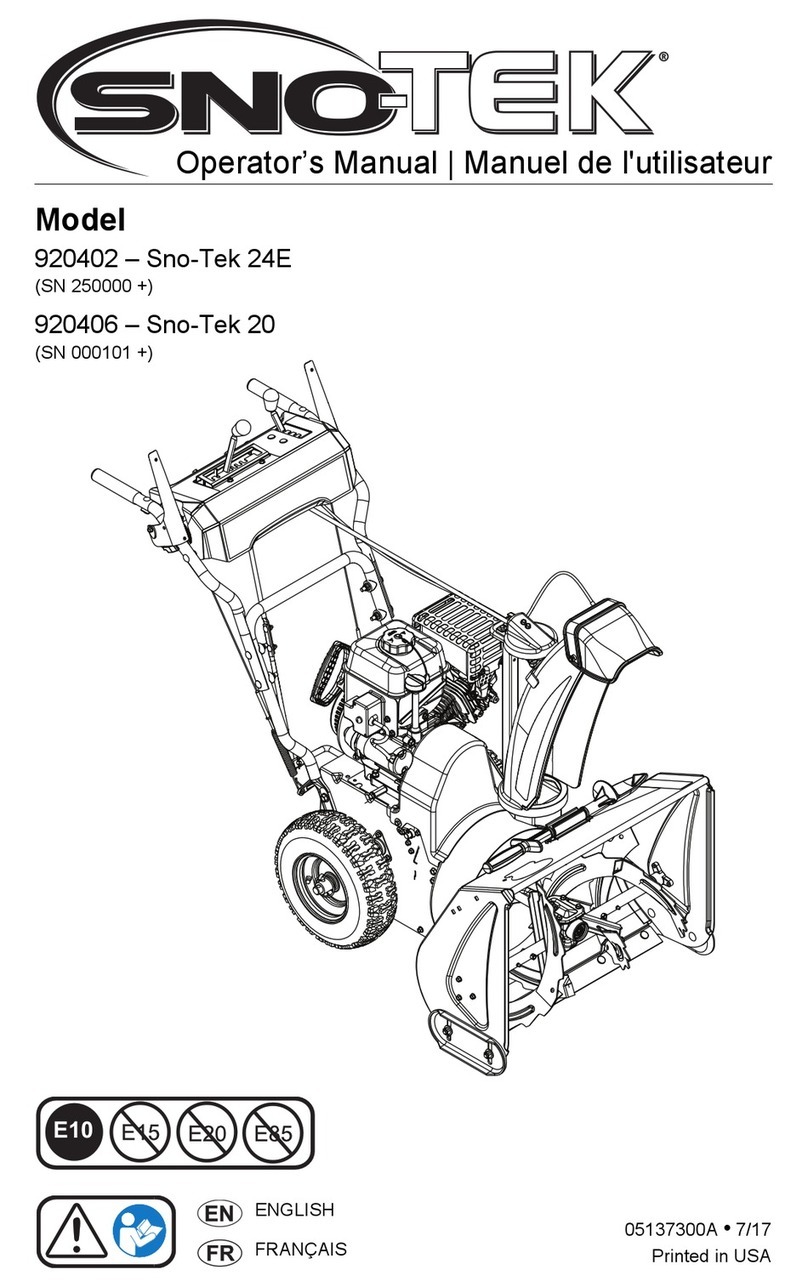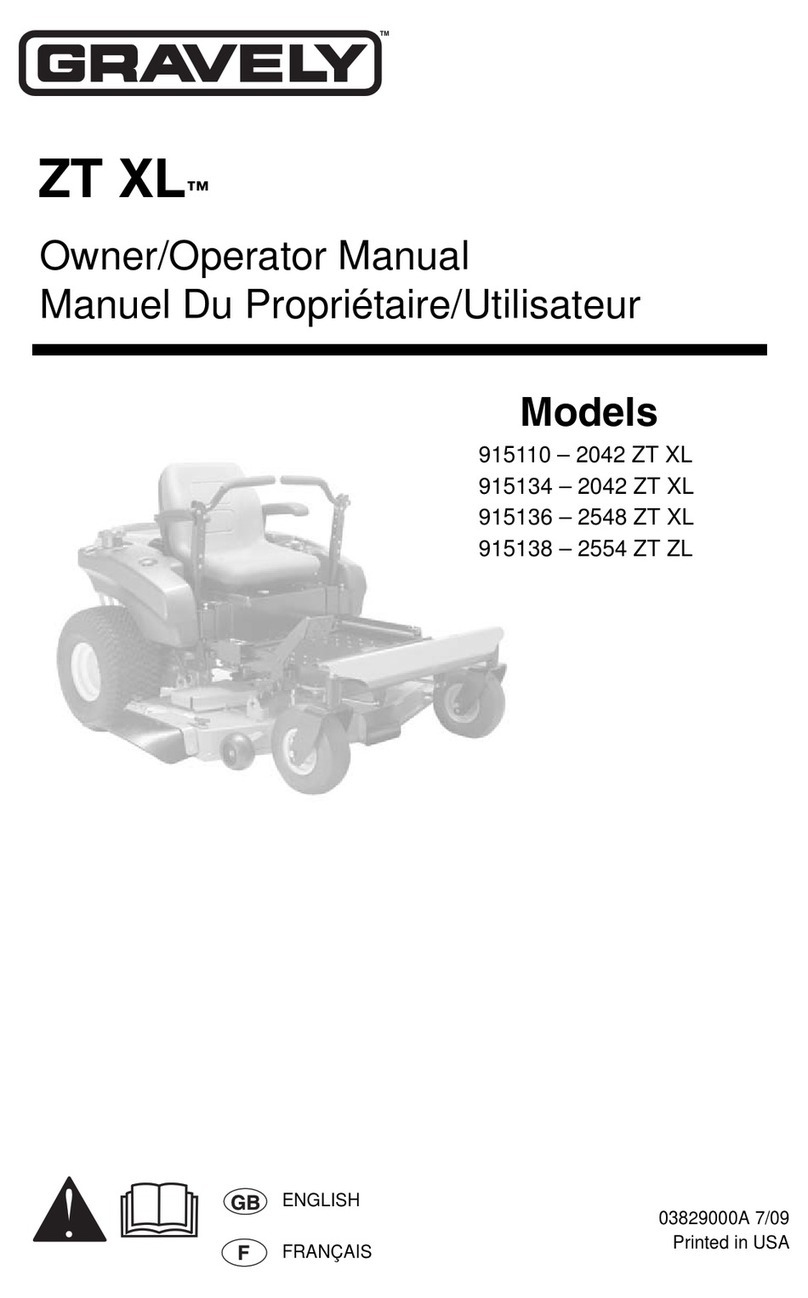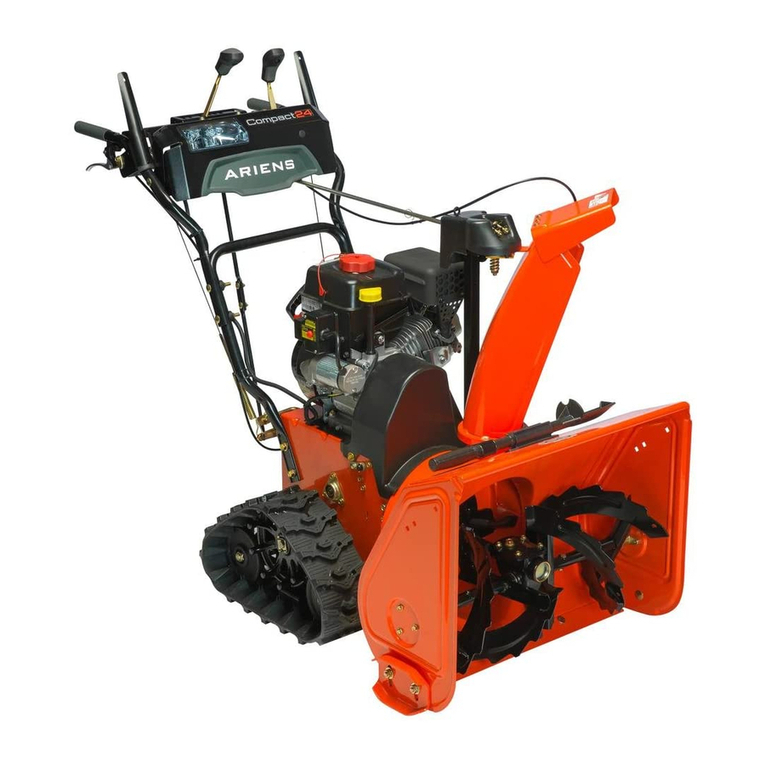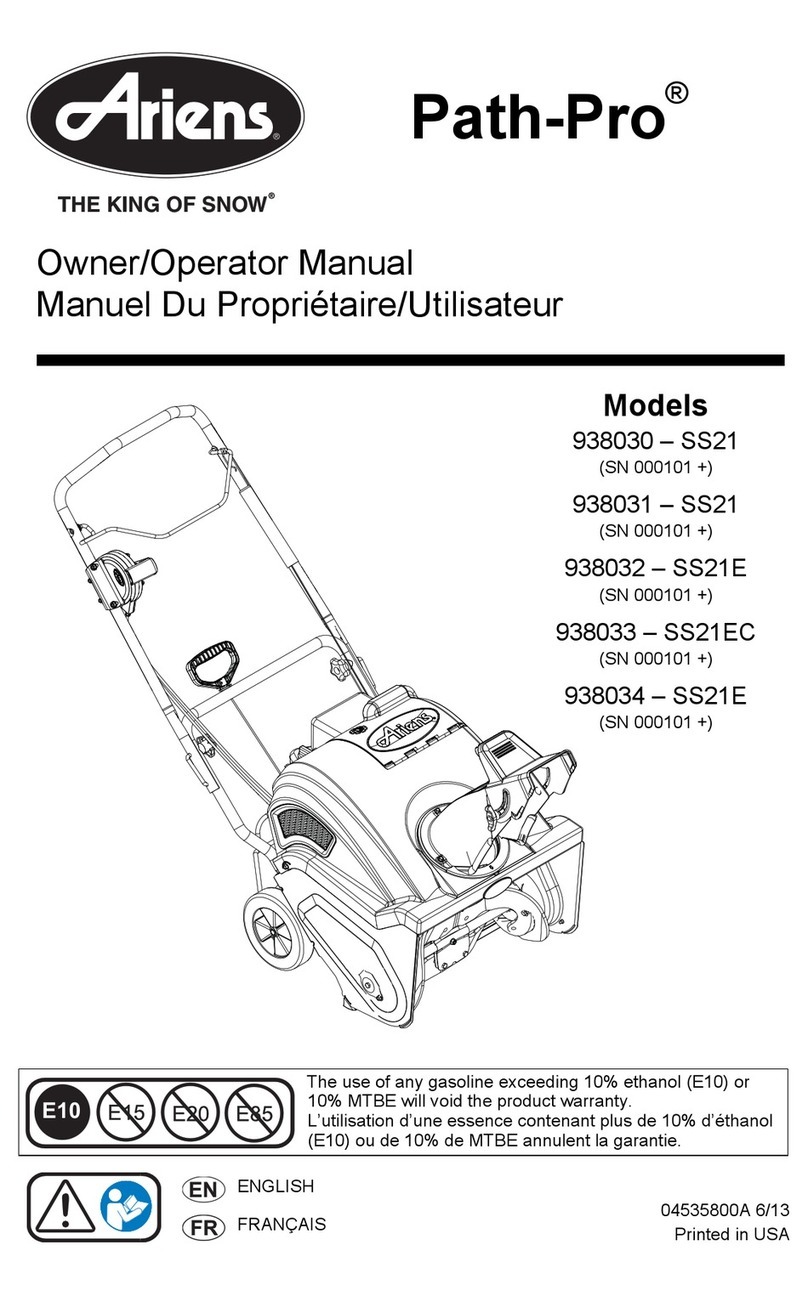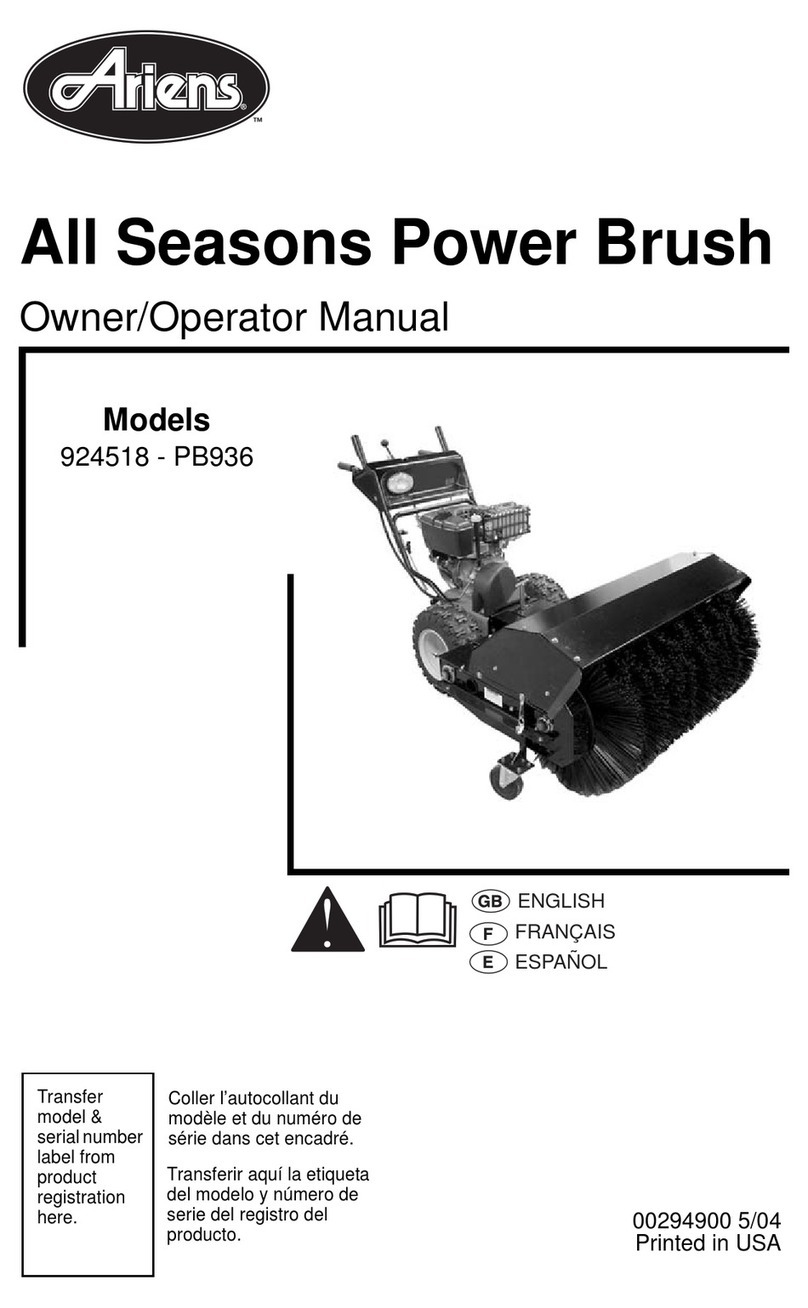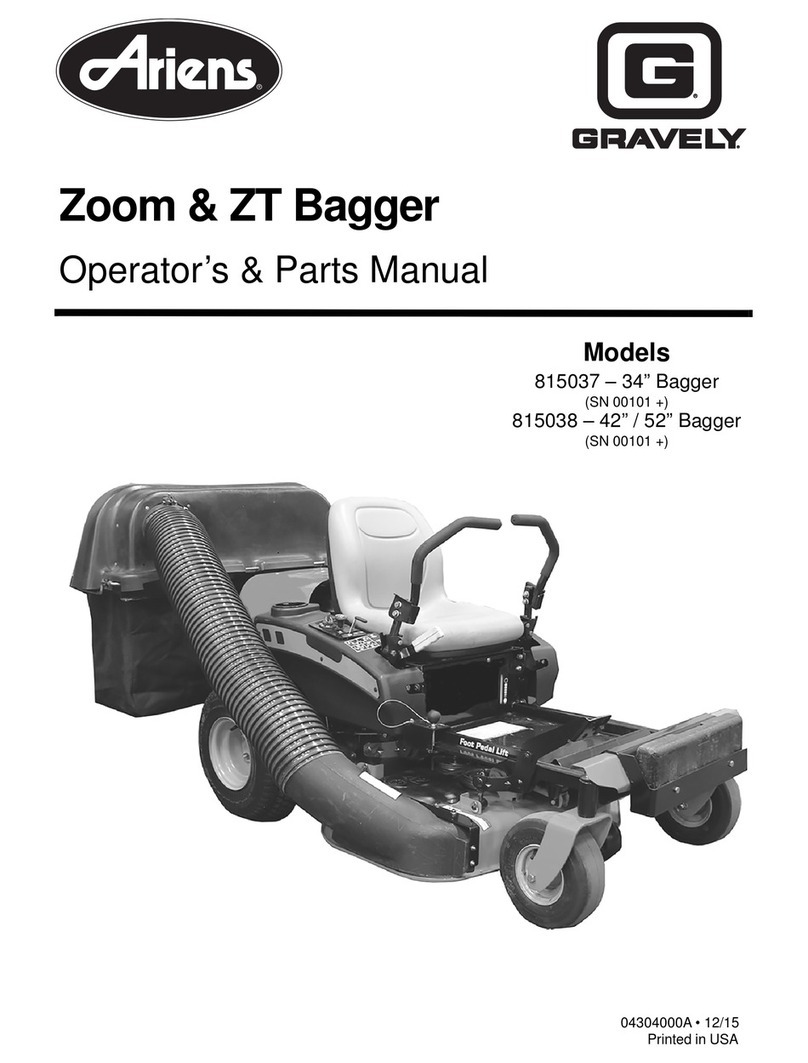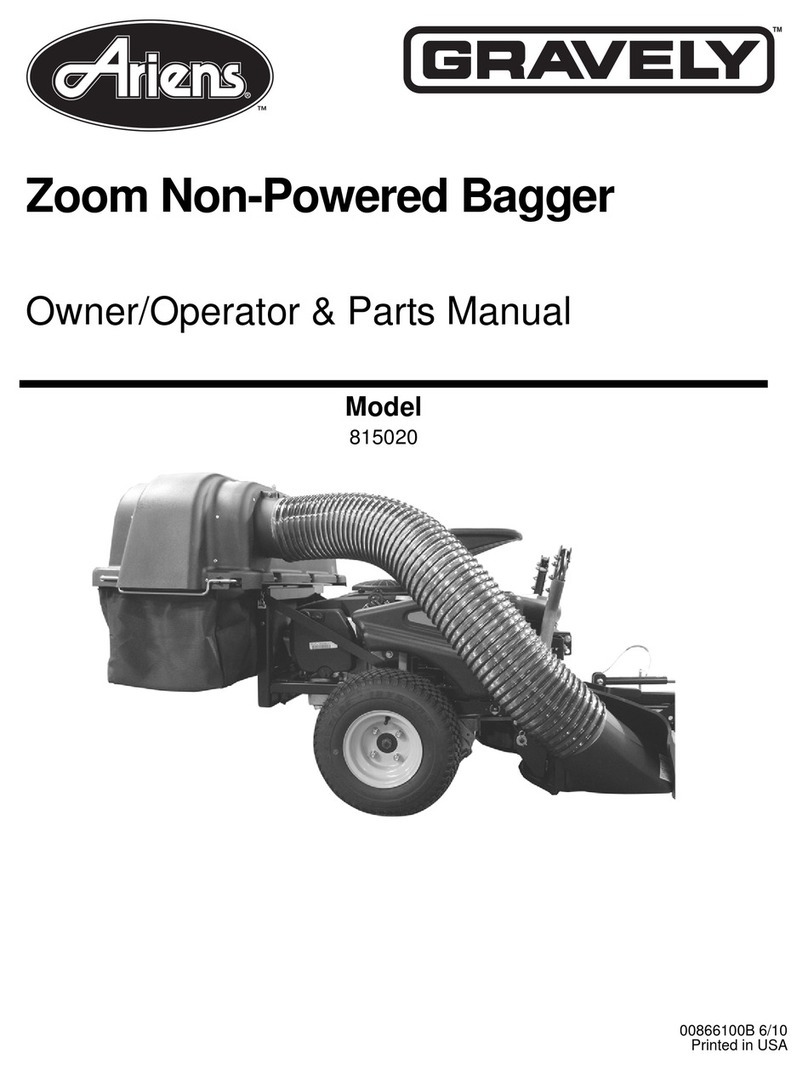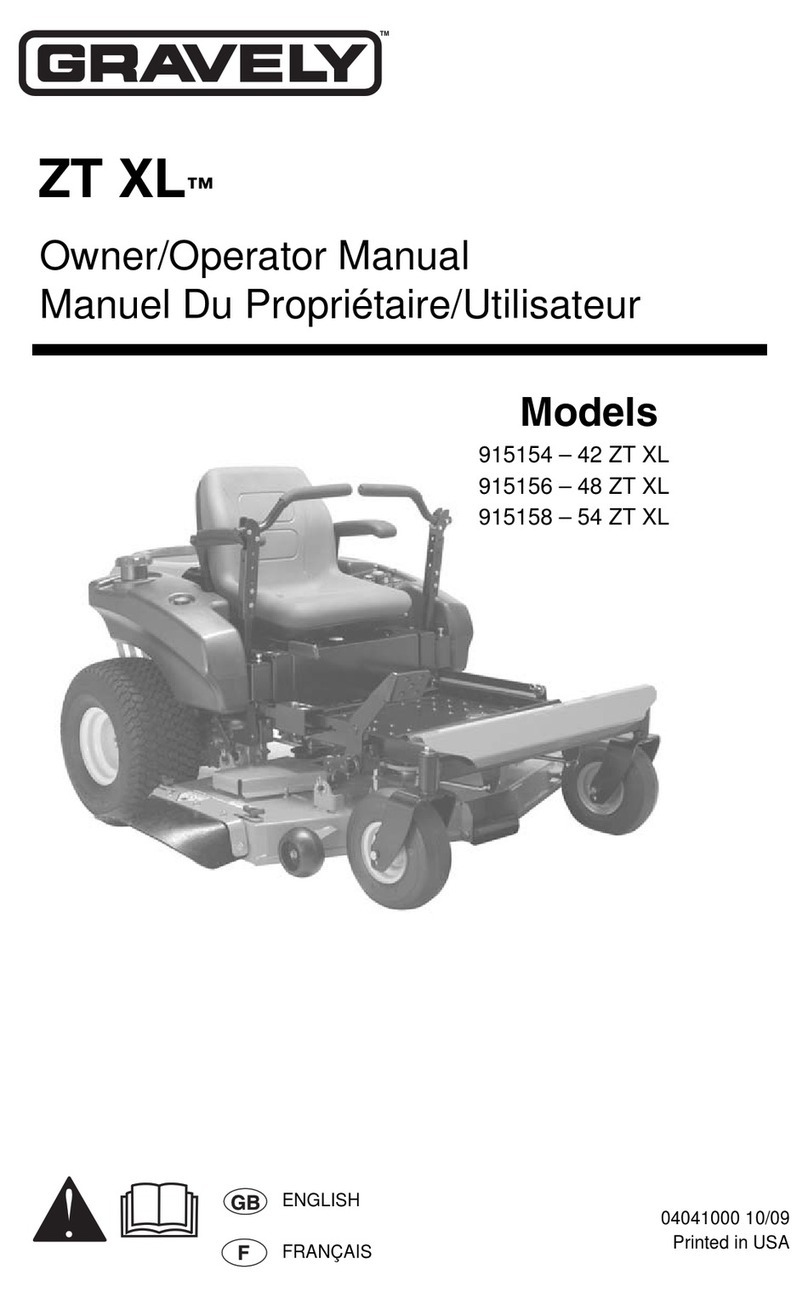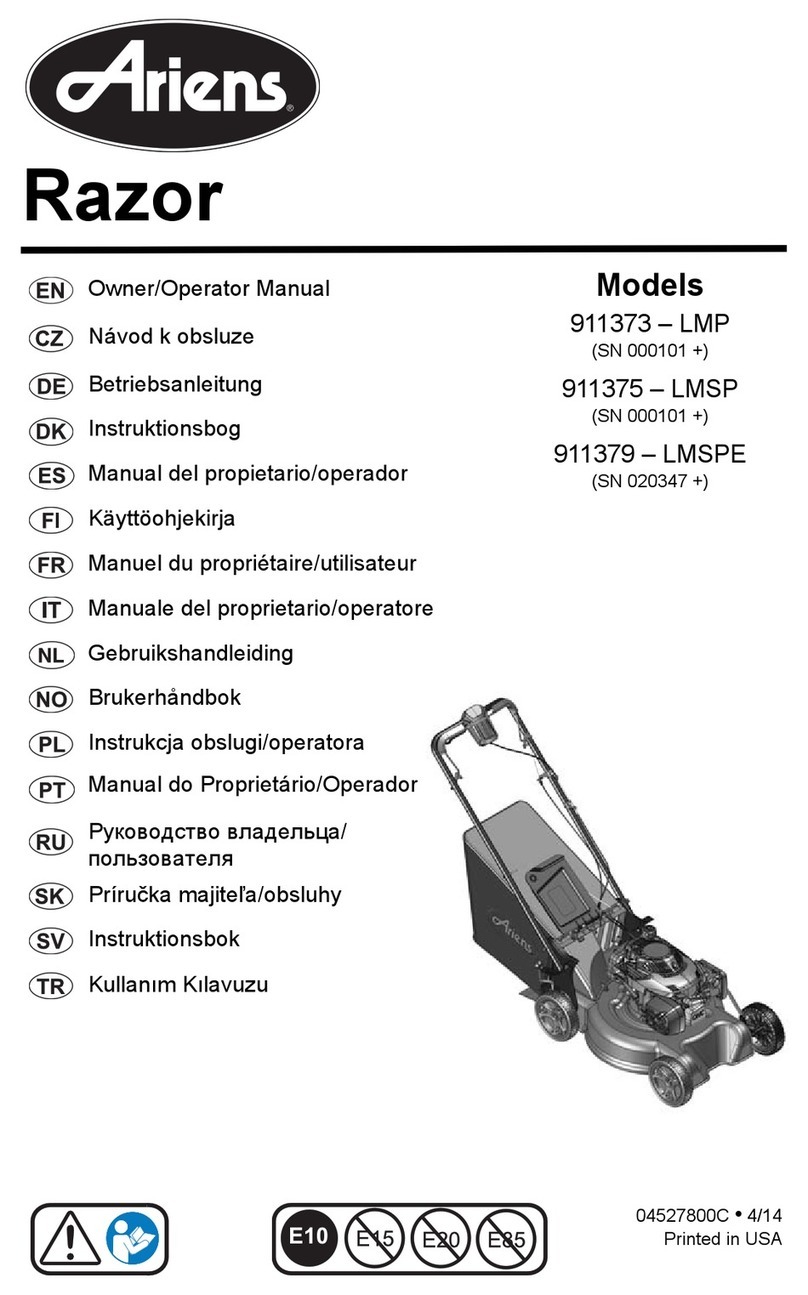
GB - 6
NEVER operate unit after or during the use of
medication, drugs or alcohol. Safe operation
requires your complete and unimpaired
attention at all times.
NEVER allow anyone to operate this unit
when their alertness or coordination is
impaired.
DO NOT operate unit without wearing
adequate outer garments. Wear adequate
safety gear, including safety glasses with side
shields, and protective gloves. Wear proper
footwear to improve footing on slippery
surfaces.
DO NOT wear loose clothing or jewelry and
tie back hair that may get caught in rotating
parts.
Protect eyes, face and head from objects that
may be thrown from unit. Wear appropriate
hearing protection.
Avoid sharp edges. Sharp edges can cut.
Moving parts can cut off fingers or a hand.
ALWAYS keep hands and feet away from all
rotating parts during operation.Rotating parts
can cut off body parts.
NEVER place your hands or any part of your
body or clothing inside or near any moving
part while unit is running.
ALWAYS keep hands away from all pinch
points.
DO NOT touch unit parts which might be hot
from operation. Allow parts to cool before
attempting to maintain, adjust or service.
Never direct discharge towards persons or
property that may be injured or damaged by
thrown objects. Use extreme caution on
gravel surfaces. Stay alert for hidden hazards
or traffic.
Deflected materials can cause injury and
property damage.
Always stand clear of the discharge area
when operating this unit.
Fumes from engine exhaust can cause injury
or death. DO NOT run engine in an enclosed
area. Always provide good ventilation.
ALWAYS disengage attachment, stop unit
and engine, remove key and allow moving
parts to stop before leaving operator’s
position.
Read, understand, and follow all instructions
in the manual and on the machine before
starting.
Understand:
• How to operate all controls.
• The functions of all controls.
• How to STOP in an emergency.
Before starting engine, disengage control(s).
Use only approved extension cords and
receptacles when starting units equipped with
electric starter. DO NOT connect electric
starter cord to any wiring system that is not a
three-wire grounded system.
ALWAYS allow unit and engine to adjust to
outdoor temperatures before clearing snow.
Always be sure of your footing, especially
when operating in reverse or leaving the
operator’s position. Walk, never run during
operation.
DO NOT overload the machine capacity by
attempting to clear snow at too fast a rate.
DO NOT operate at too fast a rate.
Slow down and turn corners slowly.
Do not operate in reverse unless absolutely
necessary. ALWAYS back up slowly. Always
look down and behind before and while
backing.
Disengage attachment drive when traveling
from one work area to another.
Abnormal vibrations are a warning of trouble.
Striking a foreign object can damage unit.
Immediately stop unit and engine. Remove
key and wait for all moving parts to stop.
Remove wire from spark plug. Inspect unit
and make any necessary repairs before
restart.
Before cleaning, removing clogs or making
any inspections, repairs, etc.: disengage
clutch(es), stop unit and engine, remove key,
allow moving parts to stop. Allow hot parts to
cool.
Run unit a few minutes after clearing snow to
prevent freeze-up of attachment.
Disengage attachment when not in use.
Never leave a running unit unattended.
ALWAYS shut off engine before leaving unit.
ALWAYS remove key to prevent unauthorized
use.
Never carry passengers.
Adjust brush height before operating. Engage
traction drive clutch before attachment clutch.
If brush is set too low or if terrain is irregular
brush can drive machine rearward.
DO NOT operate on steep slopes. DO NOT
clear snow across the face of slopes. Keep all
movement on slopes slow and gradual. DO
NOT make sudden changes in speed or
direction. Use a slow speed to avoid stops or
shifts on slopes. Avoid starting or stopping on
a slope.
DO NOT park unit on a slope unless
absolutely necessary. When parking on a
slope always block the wheels.

